The basics to a happy hen: how much space do hens need?
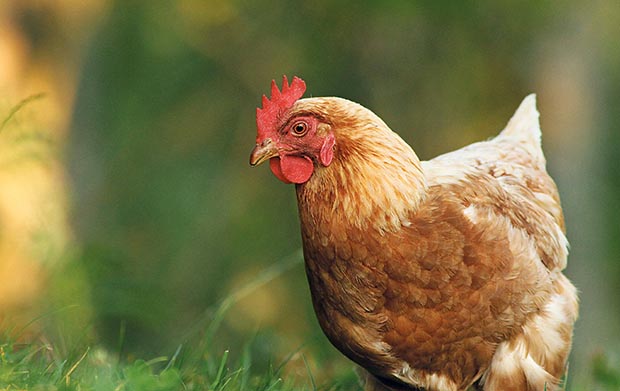
What the Animal Welfare codes say you need to do to give your hen the best environment to keep her happy, healthy and productive.
Words: Sue Clarke
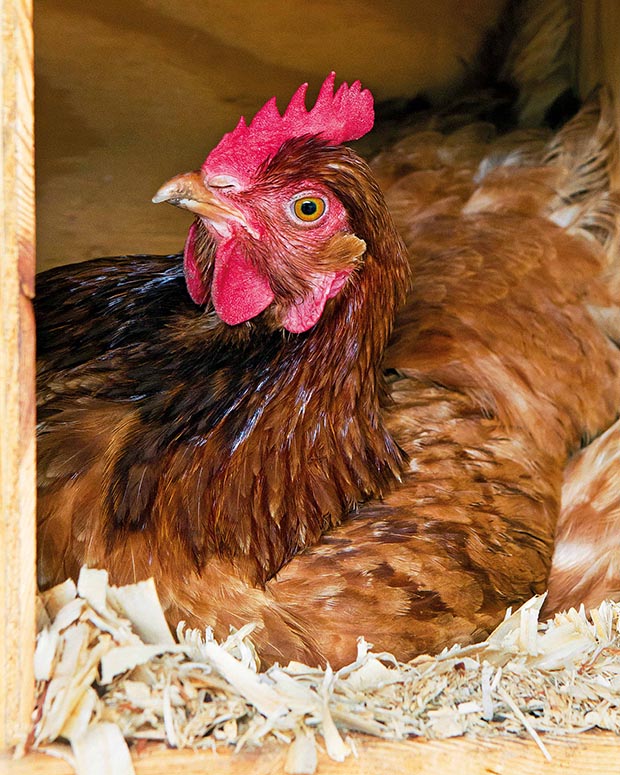
The chicken is one of the easiest animals to care for, but there are still factors you need to take into consideration:
• where will they live?
• what will you feed them?
• how do you provide the best possible conditions to make them healthy productive members of your family?
One common question I am asked is how many chickens can be kept in a coop/run/house/garden? First, it’s going to depend whether there are legal restrictions on how many chickens you are allowed. For example, in a suburban yard it can range from six to 25 depending on the council, and that’s hens only – no roosters. The next important thing to know is how big is your coop and run? Or, if you have decided on how many chickens you want to keep, how much space do they need to eat, drink, sleep, nest and scratch?
There are minimum standards laid down in the Codes of Welfare for the welfare of laying hens and meat chickens. Much of the code is common sense and is based on the health and welfare of the birds. These are conditions which must be adhered to by commercial poultry farmers and are monitored by the various regulatory authorities which govern the poultry industry and the resource management plans which are essential for all flocks of over 100 birds. However, I’m always surprised by owners of small flocks who believe the same codes do not apply to them.
The welfare codes for laying hens and meat chickens make interesting reading for both commercial and amateur flock owners, and answer many of the practical questions often asked, like the minimum amount of space required and everyday management practices. The standards also cover the care and management of poultry, and in addition there are codes for other animals, including dairy and beef cattle, pigs, sheep, deer, dogs, cats, llamas, alpacas, ostriches, emus, and circus and zoo animals. The codes also outline the welfare issues around procedures connected with livestock such as docking lambs, slaughter and transport.
The codes form part of the Animal Welfare Act 1999 so they outline the minimum standards and also recommended best practices. If a person is charged under the Animal Welfare Act in relation to an offence, then evidence of a failure to meet relevant minimum standards in the applicable code or codes may be used to support the prosecution. In defence of such a charge, evidence that you equalled or exceeded the minimum standards in the relevant code(s) may be included.
MINIMUM STANDARDS FOR HOUSING LAYING HENS
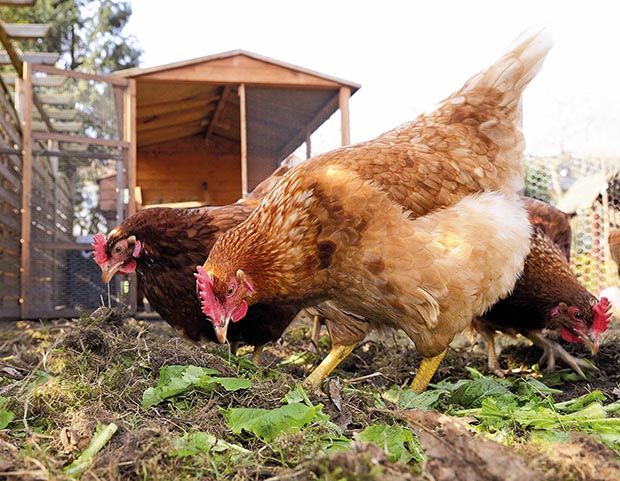
This code particularly refers to laying hens on large commercial farms but the standards equally apply to all adult poultry, both male and female. The code is too long to go into here, but if you’re interested in keeping poultry, it’s a good idea to read the whole document. Housing covers the full range of environments from cages, including the phasing out of small cages (to be replaced over time with colony cages), to barns where birds are kept inside all the time, to situations where birds have access to outside areas. It also covers sheds with a ‘winter garden’, a covered area with a floor of gravel or bark chips which is a transitional area between the barn and outdoors, protected from extreme weather and predators. Other systems which are increasingly common are aviaries or percheries where birds have access to the floor plus multilevel platforms and perches within a barn where food and water is also available. The ability to move through the various levels builds up the birds’ bone strength and also provides them with training during the growing phase for accessing nests and perches in the laying house.
HOW IS THIS RELEVANT TO YOU?
The minimum standards of space apply whether you have 10 hens or 10,000. While many small flock keepers may have a small coop and their birds are let out to roam free each day, many confine their birds to a small shed, or a shed with an outdoor run, or a small coop with an attached run which they move around the garden. Some breeders of heritage breeds may also confine their birds to small cages or hutches, especially during the show season, to accustom their birds to confinement. The relevant minimum standards apply equally in all of these cases.
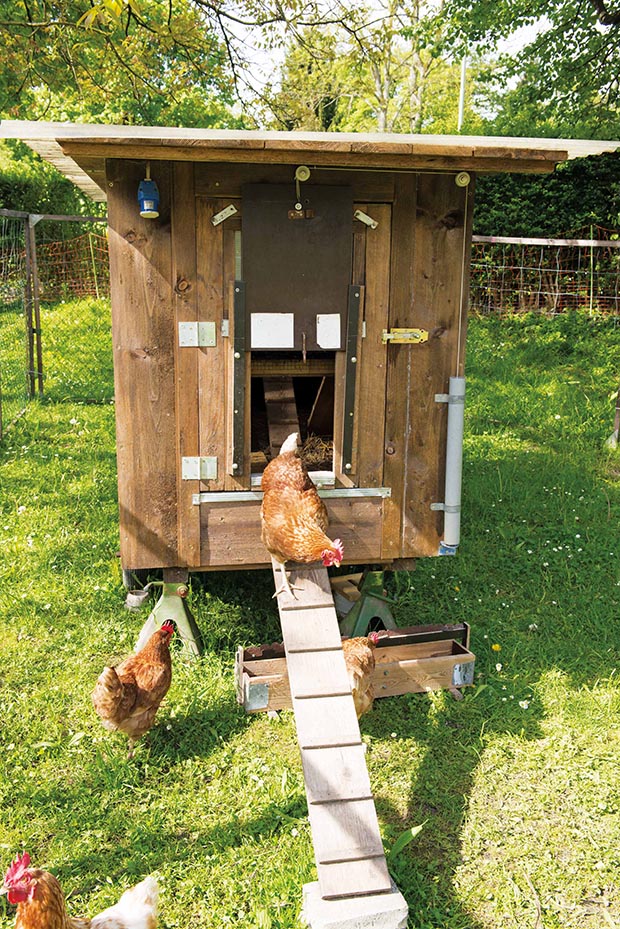
1. SPACE PER BIRD
This is also known as the stocking density and is divided up into relevant spaces suitable for birds 7-18 weeks of age and those over 19 weeks of age. Growing birds, aged between 7-18 weeks, must not be stocked at more than 14 birds per square metre.
Adult birds, over 19 weeks of age, if in a cage, must be allowed a minimum 550cm² per bird; in colony cages it’s a minimum of 750 cm² (or 13 birds per square metre); in barns where birds are on the floor but have no outdoor access it must not exceed seven birds per square metre; if outdoor access is available the maximum is nine hens per square metre. If you have a small coop with an attached run or one of those which has an overhead coop accessed by a ramp and a run area below, you’ll find they are usually sold with a recommended number of birds which can comfortably be housed, but measurements and suitability of the run area should always be checked.
This type of run is not suitable when you have birds of multiple ages and both males and females in a small area, even if the measurements comply. In a commercial scenario, the birds housed are almost always of the same age and size so issues with hen pecking or male/female aggression are less of a problem. Where outdoor ranging area is available, the stocking density must not exceed 2500 birds per hectare. However, the recommended best practice is 900 birds per hectare as things like soil type, drainage and flock rotation will vary from place to place.
2. FOOD AND WATER
Birds must be supplied with adequate quantities of food and nutrients each day to enable them to:
• maintain good health;
• meet their physiological demands;
• avoid metabolic and nutritional disorders;
• have continual access to water that is sufficient for their needs, palatable and not harmful to their health;
• have food and water provided in ways that prevent undue competition and injury with feeding space of 10cm of lineal trough space per hen or 4cm of trough space for a circular feeder, and drinking space of 2.5cm per hen in a trough or 1cm of space at a circular drinking trough.
Hens in cages must have access to two nipple drinkers or in other systems one bell drinker per 100 birds or one nipple to 10 birds.
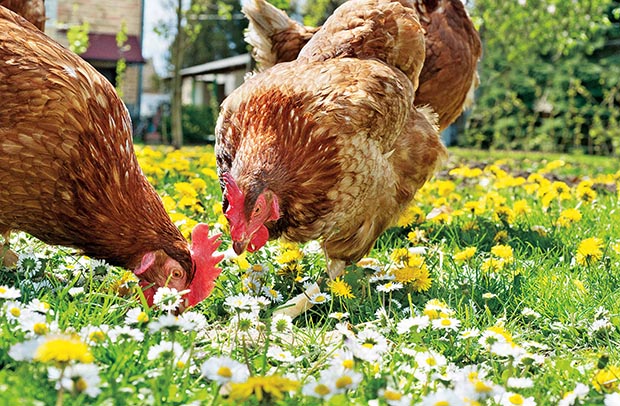
3. PERCHING SPACE
There should be an allowance of 15cm per bird – best practice recommends 17cm/bird. Perches should also be spaced so birds below cannot peck at the vents of birds perching above.
4. NEST SPACE ALLOWANCE
There should be one nest for every seven hens, but the best practice also states:
“Secluded nest areas must be provided and must be of adequate size and number to meet the laying needs of all hens, and ensure hens can lay without undue competition.”
MINIMUM STANDARDS FOR HOUSING MEAT BIRDS
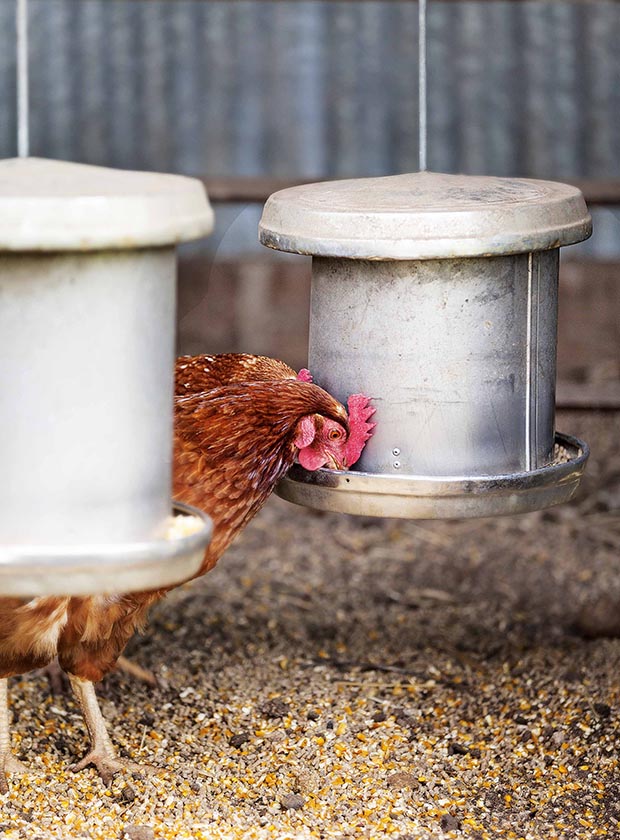
This code applies to chickens being raised for commercial meat production, however the minimum standards should also apply to those people rearing chickens for home consumption as the standards apply whether the birds are kept indoors or have access to outdoors.
The standard includes the following:
(a) All meat chickens must have access to shelter from adverse weather that is likely to cause heat or cold stress, and to reduce the risk of predation.
(b) Openings provided for chickens to access an outside area must be wide enough to enable chickens to freely move to and from the outdoors at all times without the risk of smothering or injury.
(c) Where access to outside areas is provided it must be managed to prevent the development around the housing of muddy, dusty or contaminated conditions to an extent that could be harmful to the chickens’ health.
(d) Precautions must be taken to protect chickens from pests, including predators.
1. SPACE PER BIRD
The subject of stocking density is more based on the amount of bodyweight in a given area rather than in bird numbers as the maximum density is arrived at once the birds are grown. Commercially, birds are brooded in greater numbers (since they are quite small when young) and then progressively given more space as they grow.
(a) Chickens must be managed at a stocking density that takes account of growth rate, competition for space, access to feeders and water, air temperature and quality, humidity, litter quality and activity levels, so as to maintain good health and welfare.
(b) Notwithstanding (a), stocking density in sheds must not exceed 38kg of live weight per square metre of floor space.
(c) Outdoor stocking density must not exceed the capacity of the outside area or cause overcrowding.
The codes also include useful outdoor flock management tips for small flock owners. Hens with access are observed to use the outside range frequently, so it’s important to:
• keep pugging, standing water and muddy, dusty or contaminated conditions to a minimum – the area immediately around the barn should be managed to keep hens’ feet clean;
• keep the range free of poisonous plants and contaminants;
• run a system of range rotation that takes account of the type of soil, drainage and flock size;
• enhance the range to encourage hens to use the entire area so they feel safe to move away from the barn, opening and perimeter by including trees, shrubs, covered shelters, covered sand baths, or straw bales.
The most important tip there is in terms of health for any flock owner is to prevent paddocks (or gardens) becoming muddy or burdened with worms, coccidia and other parasites. One of the easiest ways to do this is to have separately fenced areas that you can open or close off depending on the conditions, resting areas where pasture is getting too short, or exposed soil is turning to mud.
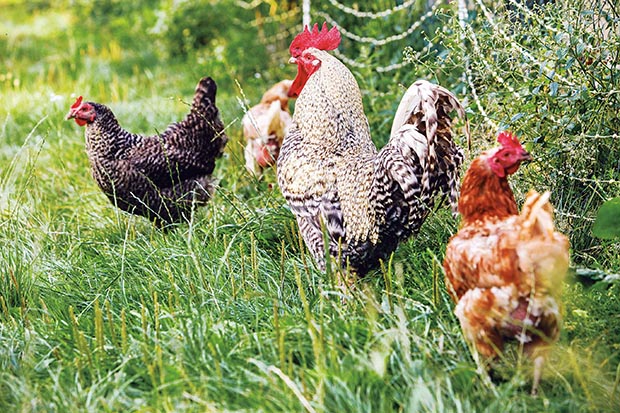
2. FOOD AND WATER
The provisions of food and water for meat chickens are the same as for laying hens. Birds must be supplied with adequate quantities of food and nutrients each day to enable them to:
• maintain good health;
• meet their physiological demands;
• avoid metabolic and nutritional disorders;
• have continual access to water that is sufficient for their needs, palatable and not harmful to their health;
• food and water must be provided in ways that prevent undue competition
and injury.
TIP OF THE MONTH
Blood spots vary from small spots on the surface to heavy contamination throughout the yolk, sometimes the blood can be diffused through the egg white. These occur when blood vessels rupture in the ovary or oviduct. It depends on the age and breed of birds, but is affected by a number of factors including the level of Vitamin A and Vitamin K in the diet, fungal toxins, lighting or frights. Meat spots are usually brown in colour and range from 0.5mm to 3mm in diameter. Most meat spots are pieces of tissue from body organs, but some can be partially broken down blood spots.
DEFINITIONS USED BY THE POULTRY INDUSTRY

Alternative systems
Egg farming systems which are not conventional cage systems. This may include colonies, free-range, aviary or barn farming methods.
Aviary
A building for layer hens without conventional cages, similar to a barn but providing two or more floor levels, giving free access for all birds to all floors.
Barns
A building for layer hens. A barn does not contain conventional cages, is on a single level, and has no outdoor access.
Conventional battery cages
A metal enclosure containing 2-9 birds, depending on size. These cages do not include a perch, a nest box or a dust bathing area.
Colony cages
A modified and enlarged cage with more space than a conventional cage, with perching, nesting and dust bathing areas. A colony is sometimes also referred to as a furnished or enriched cage, or furnished or enriched colony.
Perchery
A barn or aviary with perches.
Range
An outdoor area, usually grassy, used by birds in free-range farming.
Love this story? Subscribe now!
 This article first appeared in NZ Lifestyle Block Magazine.
This article first appeared in NZ Lifestyle Block Magazine.
